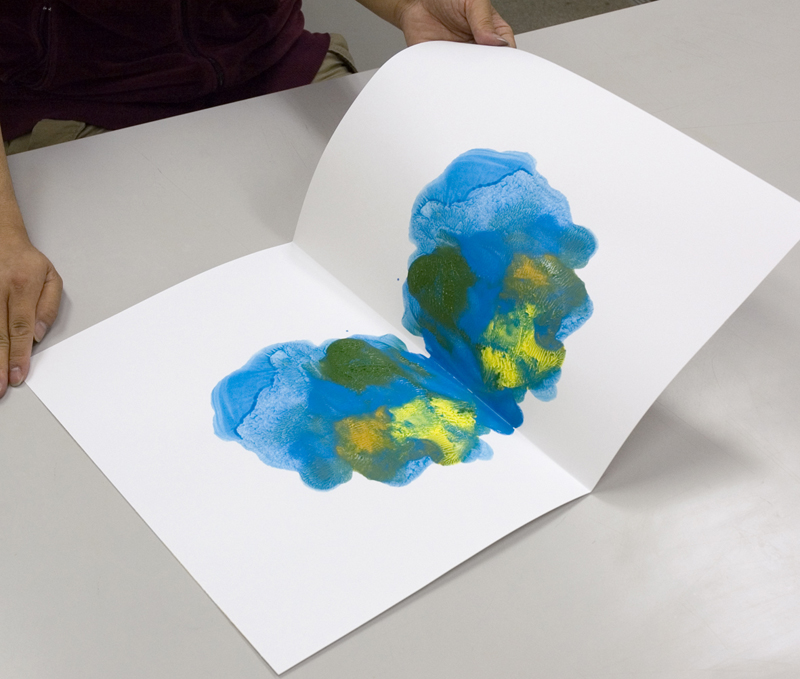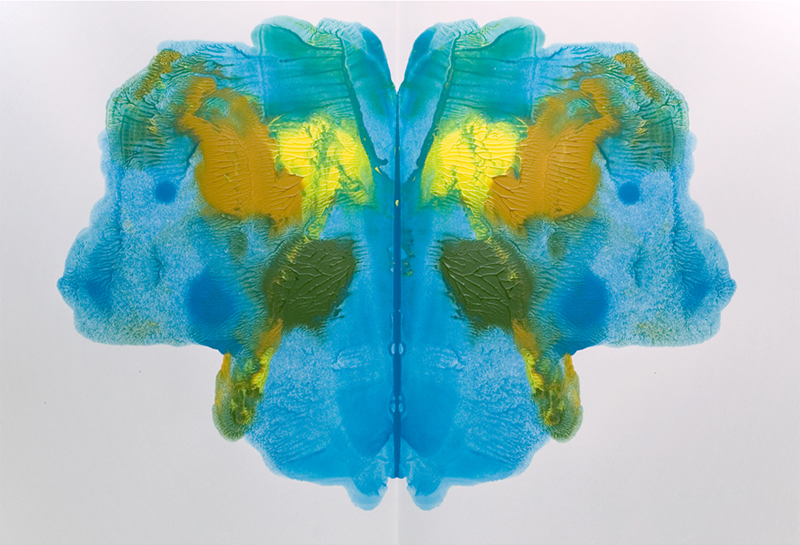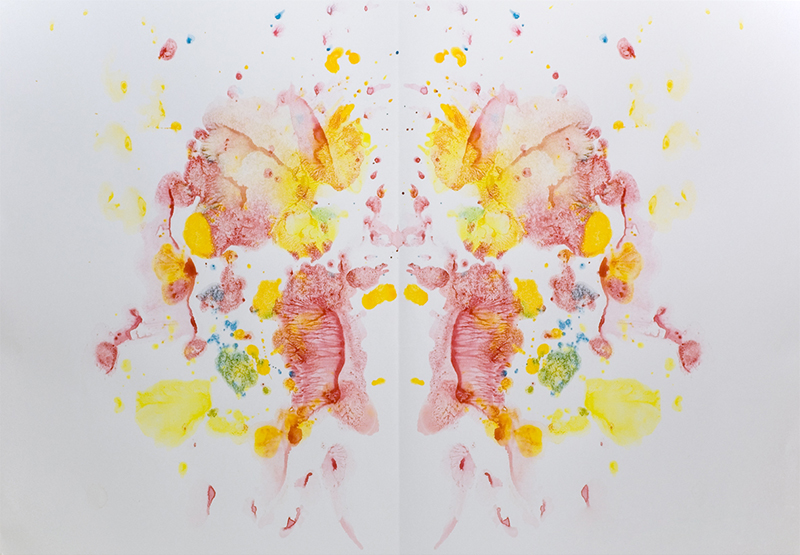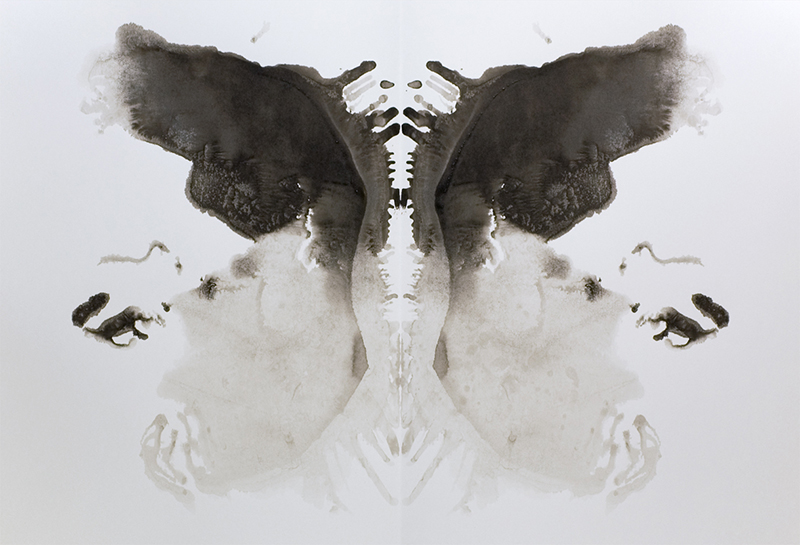Decalcomania
デカルコマニー
Decalcomania
CATEGORIES
Decalcomania, from the French décalcomanie, is the technique of placing paint between two sheets of paper or between paper and some other material and pressing down and spreading the paint. This produces a random pattern over which the artist has no control. The term originates from the French word, “décalguer”, which means to transfer.
When using paper, the paint is placed between a folded sheet of paper and the sheet is then opened again to reveal the pattern. Alternatively, the paint is applied to an acrylic panel or a sheet of paper and another sheet of paper is placed on top and pressure is applied. The patterns produced on folded paper are symmetrical on either side of the fold line. In decalcomania, the properties of the paper, paint and other materials used have a major effect on the expressive effect. There are various types of paper which differ in terms of their smoothness and absorbency and each produces results with different features. Basically, smooth, less-absorbent Kent paper or art paper is used. Water colors, acrylics or similar water-based paints are most suitable. If using viscous paints that can be directly applied from tubes, it is easier to get the lines and dappled patterns that are characteristic of decalcomania. Mixing ratios of water, etc. can also obtain a variety of expressions. Applying pressure to the paper is done by a baren or the palm of the hand and different levels of pressure and methods produce different patterns. The paper should then be peeled away slowly and gradually. It is also possible to produce expressive decalcomania effects by putting oil paints on a canvas, applying pressure on an acrylic board or similar item and peeling it back.
Originally, the technique was used to transfer a painting from paper to porcelain or glass but the artist, Óscar Domínguez, incorporated the method into his works. Decalcomania images surrender themselves to spontaneity with no control or intent from the artist. Such images expand the imagination of the viewer and, along with frottage, is an automatism technique that became prevalent among surrealists. Work by Max Ernst is particularly famous in this genre.
It is important that decalcomania is done before the paint has hardened. Therefore, artists need to work fast when using acrylics and similar fast-drying paints.

- Examples (on Kent paper)
 Acrylic paint
Acrylic paint  Transparent watercolor
Transparent watercolor Liquid (India) ink
Liquid (India) ink
